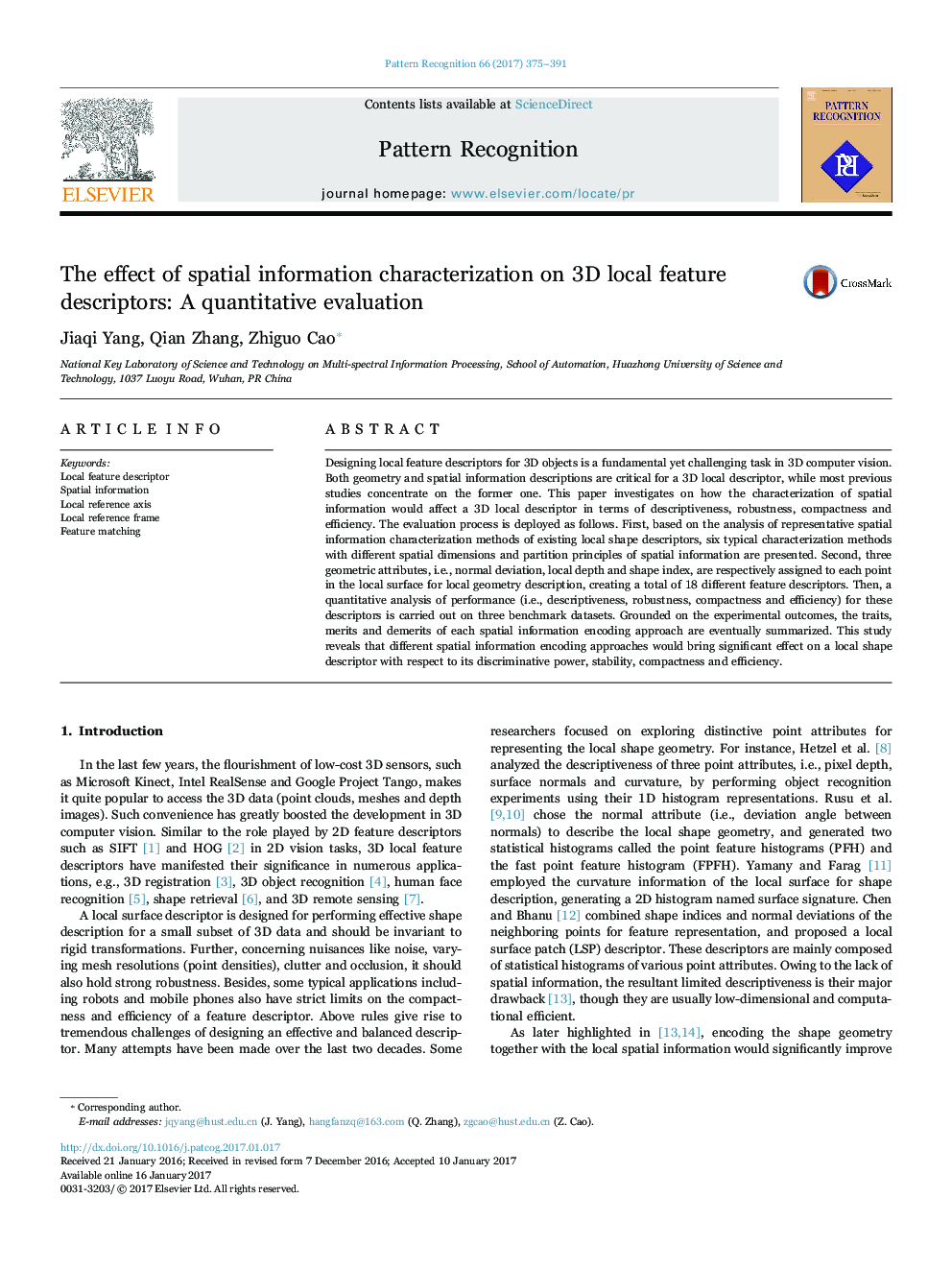| Article ID | Journal | Published Year | Pages | File Type |
|---|---|---|---|---|
| 4969730 | Pattern Recognition | 2017 | 17 Pages |
Abstract
Designing local feature descriptors for 3D objects is a fundamental yet challenging task in 3D computer vision. Both geometry and spatial information descriptions are critical for a 3D local descriptor, while most previous studies concentrate on the former one. This paper investigates on how the characterization of spatial information would affect a 3D local descriptor in terms of descriptiveness, robustness, compactness and efficiency. The evaluation process is deployed as follows. First, based on the analysis of representative spatial information characterization methods of existing local shape descriptors, six typical characterization methods with different spatial dimensions and partition principles of spatial information are presented. Second, three geometric attributes, i.e., normal deviation, local depth and shape index, are respectively assigned to each point in the local surface for local geometry description, creating a total of 18 different feature descriptors. Then, a quantitative analysis of performance (i.e., descriptiveness, robustness, compactness and efficiency) for these descriptors is carried out on three benchmark datasets. Grounded on the experimental outcomes, the traits, merits and demerits of each spatial information encoding approach are eventually summarized. This study reveals that different spatial information encoding approaches would bring significant effect on a local shape descriptor with respect to its discriminative power, stability, compactness and efficiency.
Related Topics
Physical Sciences and Engineering
Computer Science
Computer Vision and Pattern Recognition
Authors
Jiaqi Yang, Qian Zhang, Zhiguo Cao,
